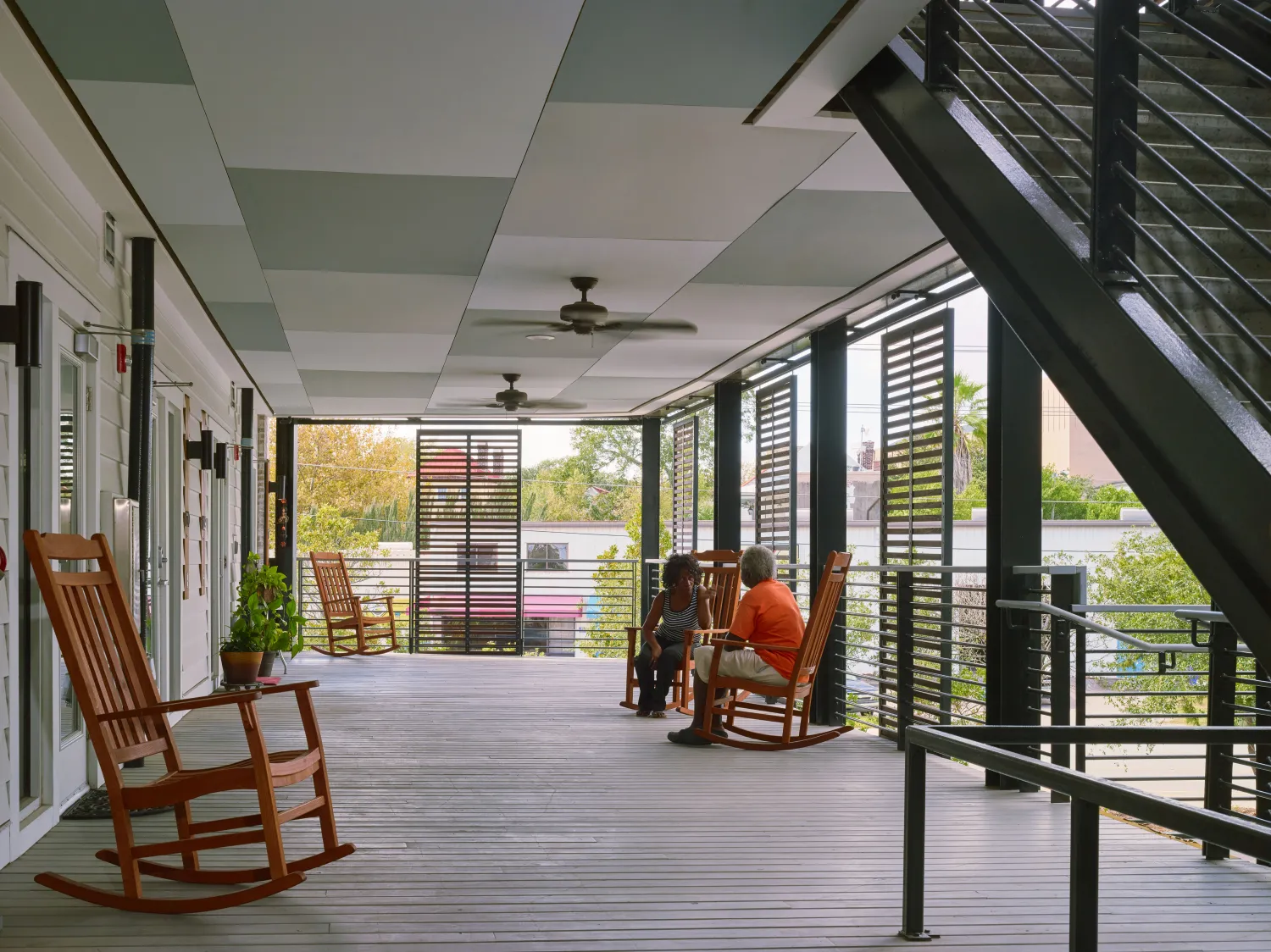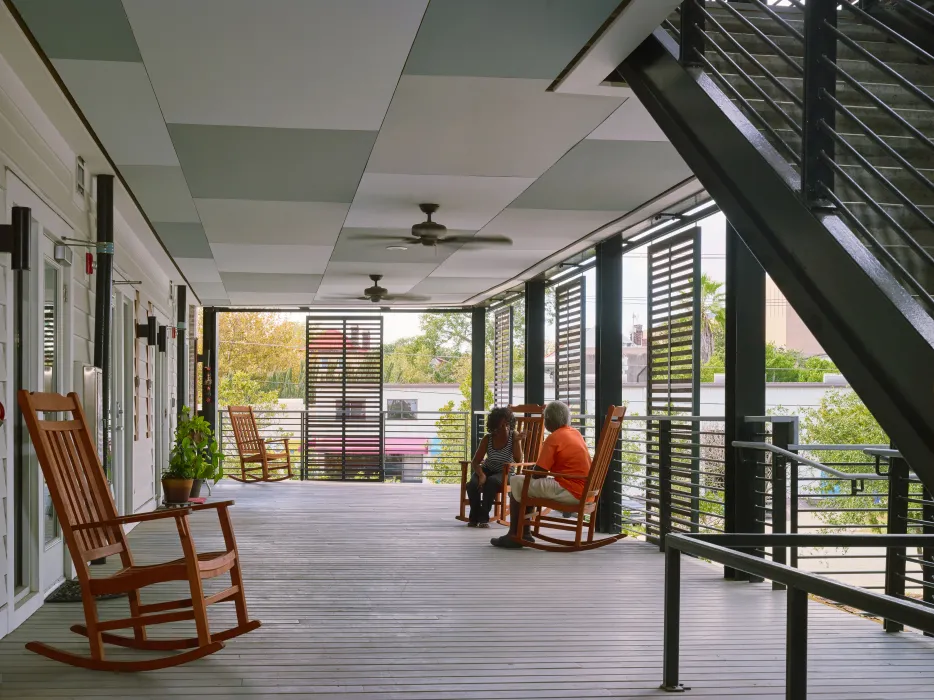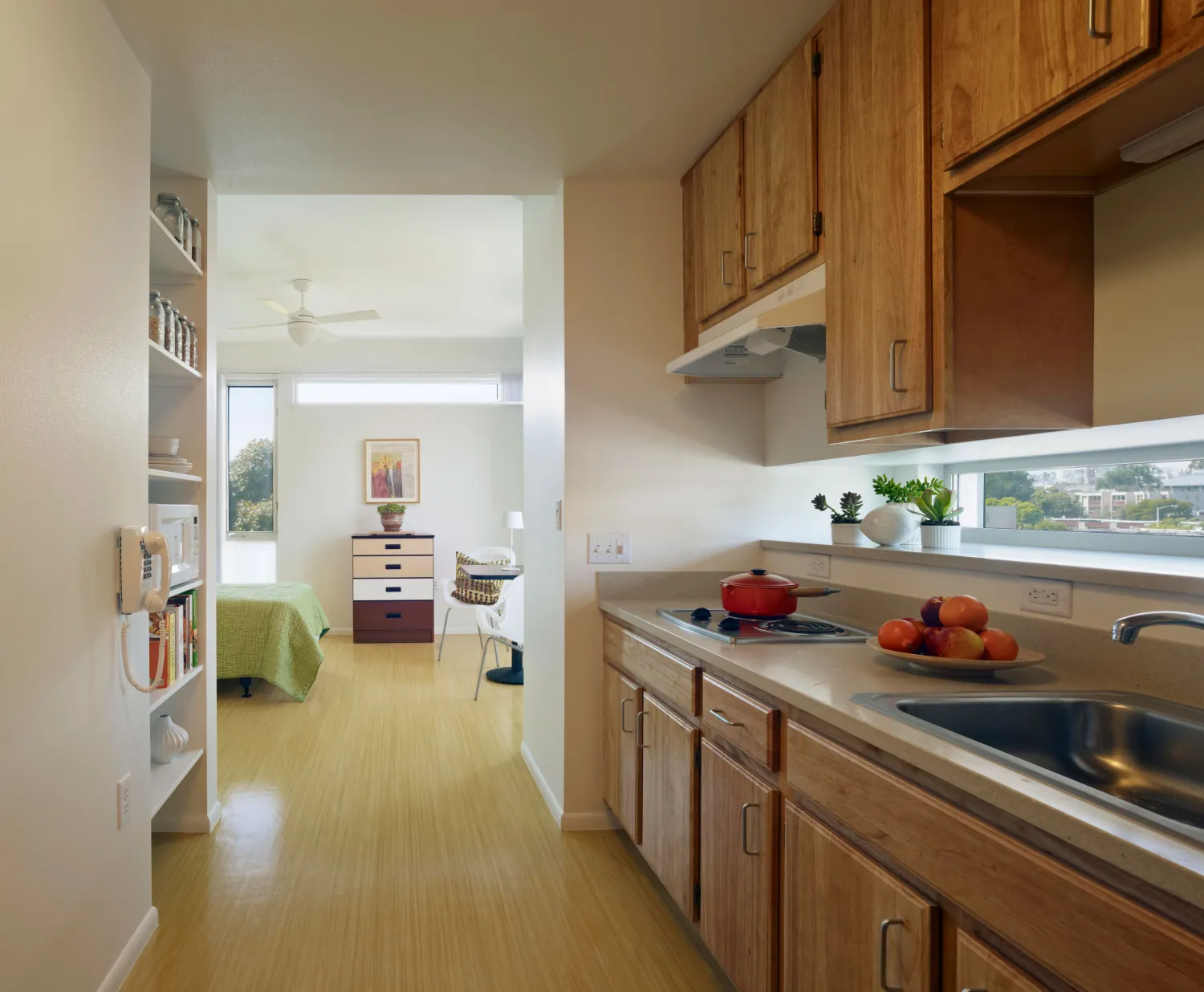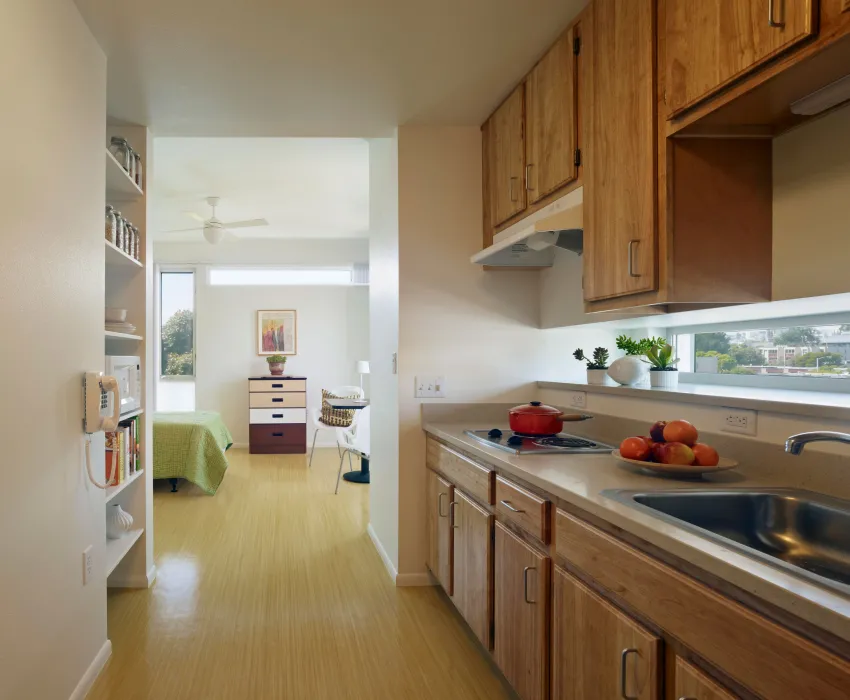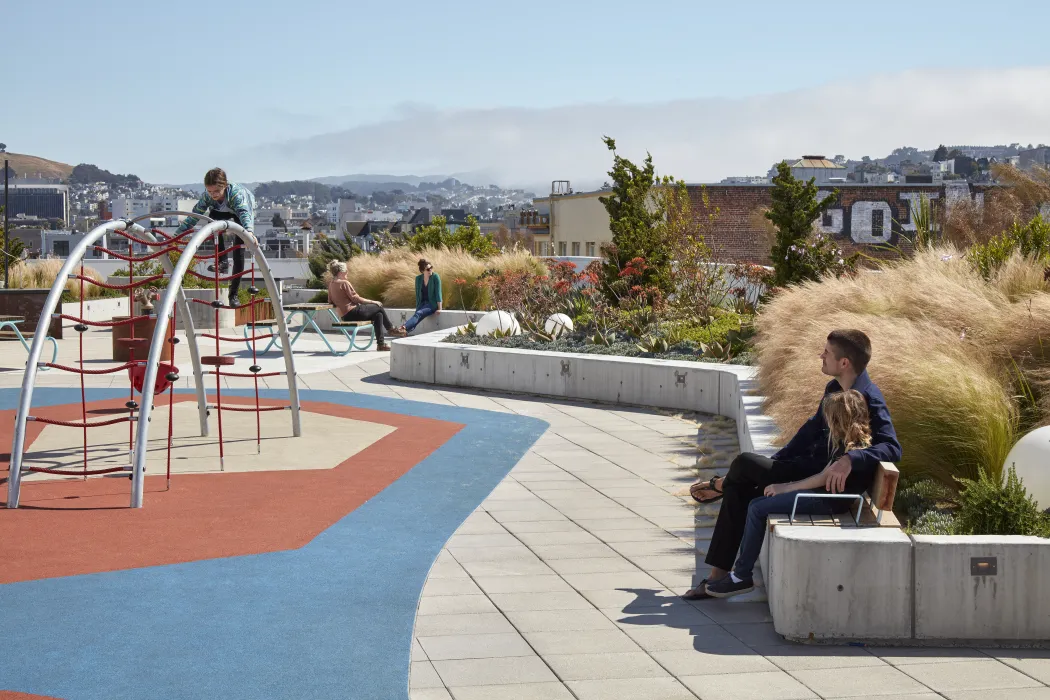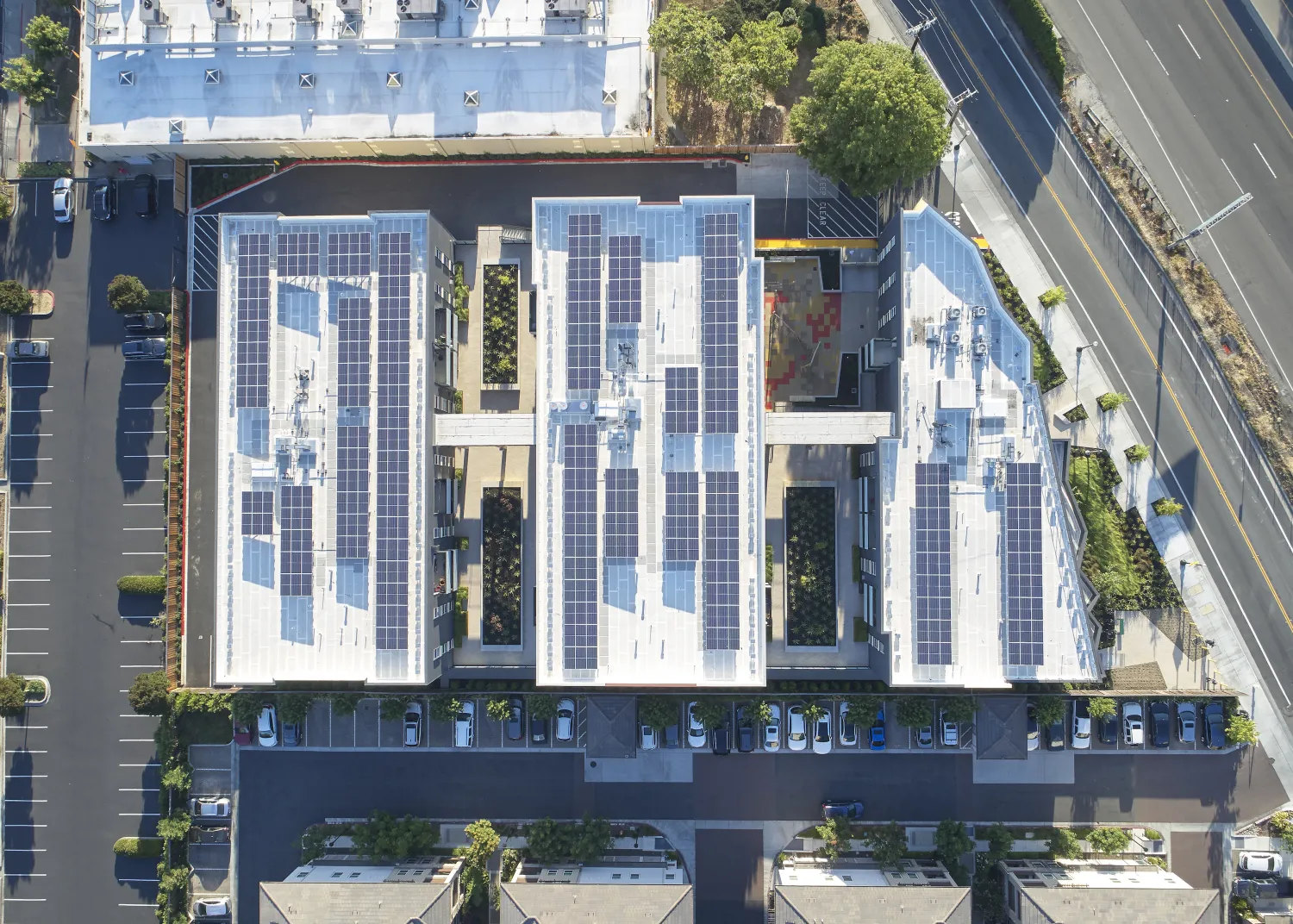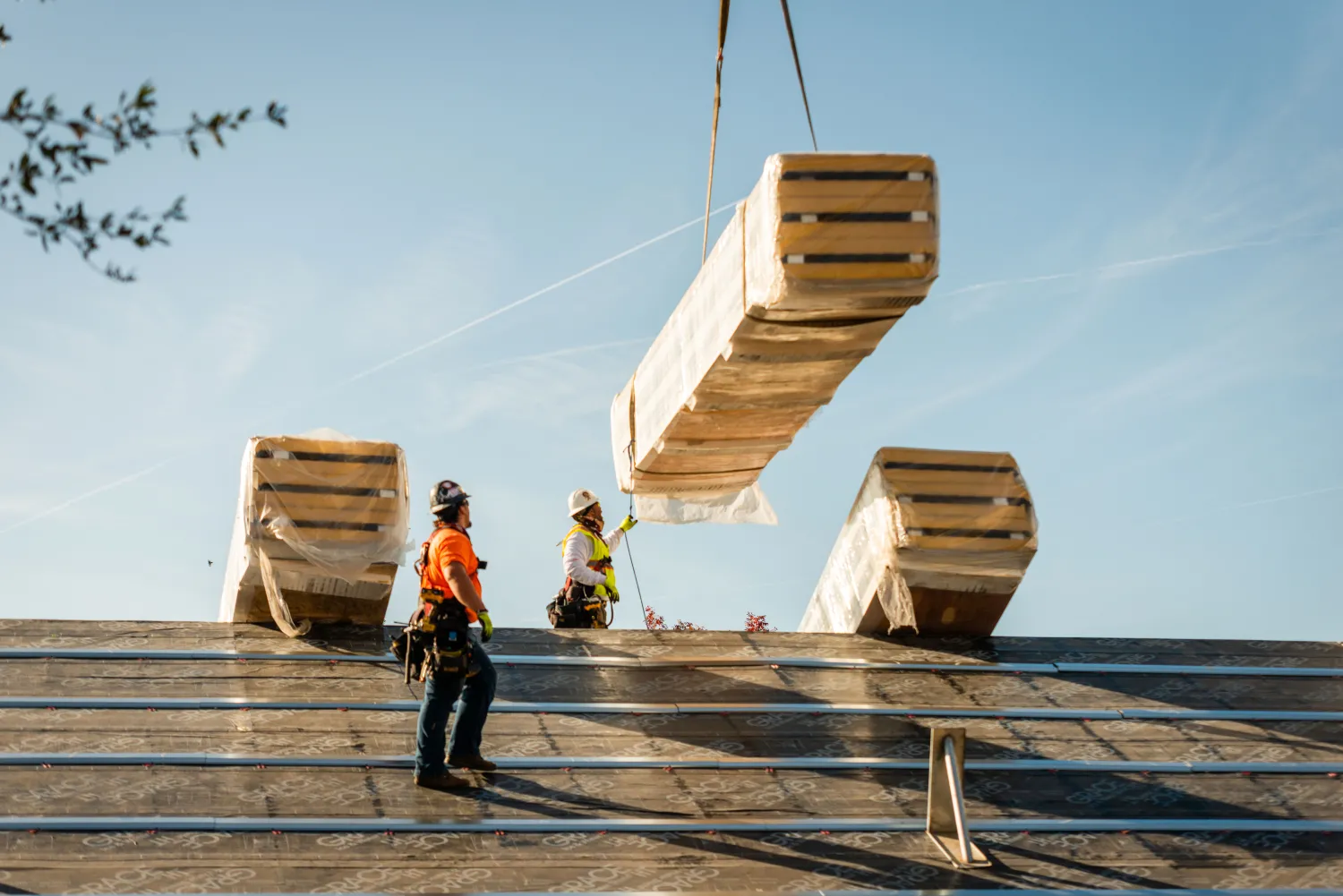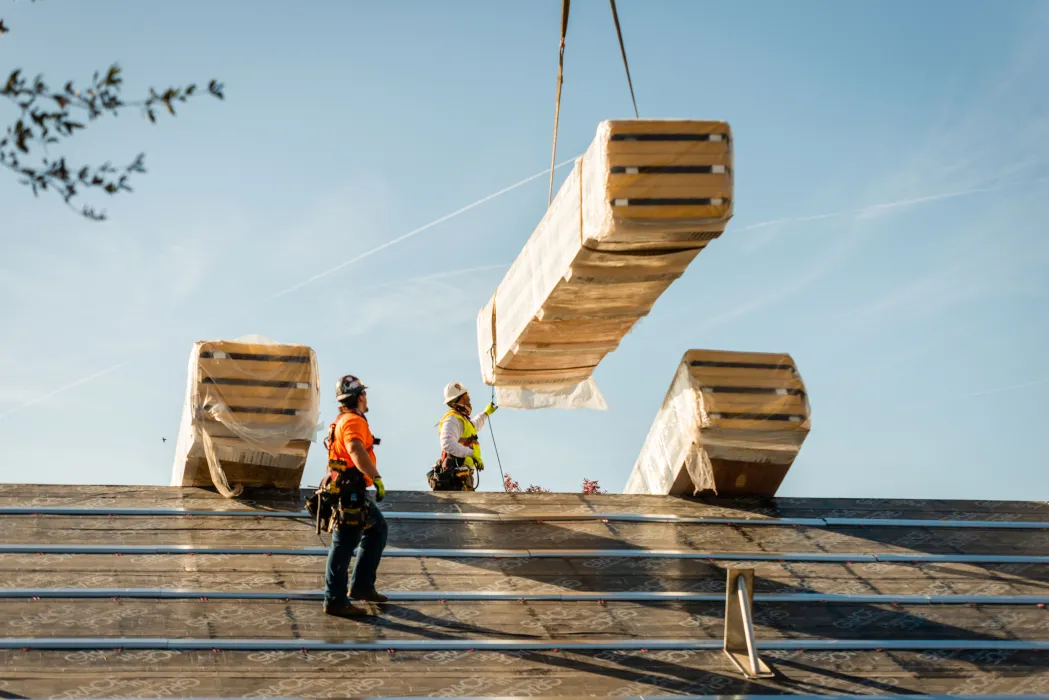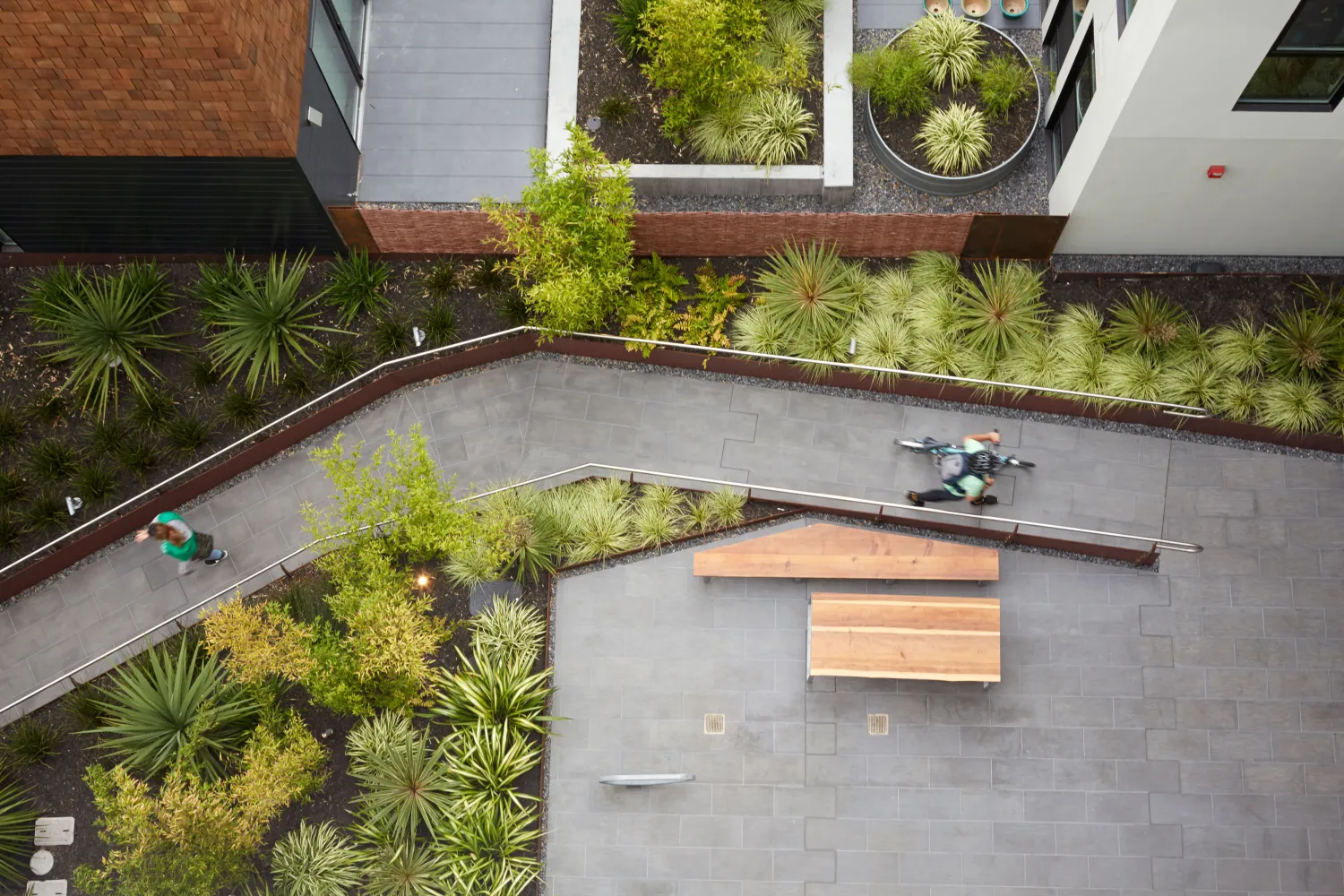
Our Approach to Sustainable Design
DBA takes a proactive, visionary, and data-informed approach to sustainable community and housing design. Because where and how we build communities is foundational to how we inhabit the planet, the context of community development, infrastructure, and social equity equally drive the impact of a project.
The power of housing providers to address climate change starts locally, in securing and expanding direct benefit—stability, health, adaptation—to the communities where they operate.
The present urgency of our time and the scale of transformation we need compels us to shift away from a “pilot” theory of change—where we rely solely on leading-edge buildings as exemplars of change that pull the industry incrementally forward. The paradigm of green building over the last 20 years has been market based, driven by the brand value of green building, which has been powerful But as the market appeal of green-building certifications has dimmed, we recognize we need to transform our practice with authenticity in order to make meaningful impact across our portfolio.
We also recognize that the old paradigm has had the adverse effect of siloing sustainable design as a special interest, posing an apparent, if unintended, conflict with other interests (like housing development, and community-interest design). Green building frameworks don’t work well for checklists and the market value of “green” lead the conversation, rather than the essential environmental and social value of the housing itself.
Our Action Plan
Our Sustainability Action Plan establishes a vision for where we think our projects need to be by 2030 to be contributing fully to global ecological solutions, in lieu of a singular “zero-carbon” portfolio goal.
It is organized into the following five areas of focus, meant to catalyze capacity growth and dismantle barriers in areas of performance that are critical for our core practice of housing, community-based commercial spaces, and neighborhood design.
In addition to providing a roadmap for building our knowledge base, each can be mapped to the AIA Framework for Design Excellence and the metrics therein for evaluating projects and progress across our portfolio.
Human Experience
Goal: We actively listen to community needs and have the tools to prioritize strategies that foster stability, comfort, agency, and belonging for all people who inhabit our projects, including in the face of disruptive change.
Healthy Materials
Goal: Our projects do not contain chemicals that cause chronic acute harm to occupants, and we continue advancing our commitment to products that support human, social, and ecosystem health.
Ecology & Water
Goal: Our projects build connections and intimacy with natural cycles by mending, enhancing, and celebrating significant components of the sitespecific ecology within which it is built. This includes habitat, carbon sequestration, and the health of water systems and resources through direction, reduction, and reuse.
Energy Resources
Goal: Our projects are set up for successful operations and reduced operating costs. We optimize the integration of on-site distributed energy resources to minimize operational carbon and achieve long term energy resilience.
Advanced Materials & Methods
Goal: Our work helps to dismantle carbon- and waste-intensive construction materials and practices and promotes industrialized construction methods that accelerate the construction and retrofit of low-carbon housing.
View the full DBA Sustainability Action Plan (PDF).
Katie Ackerly, AIA, CPHC, is Principal and Sustainable Design Director at David Baker Architects, an award-winning firm known for elevating the design of multifamily housing. Katie came to architecture from a background in building science and energy efficiency policy, and holds a Master of Architecture and a Master degree in Building Science from UC Berkeley.
